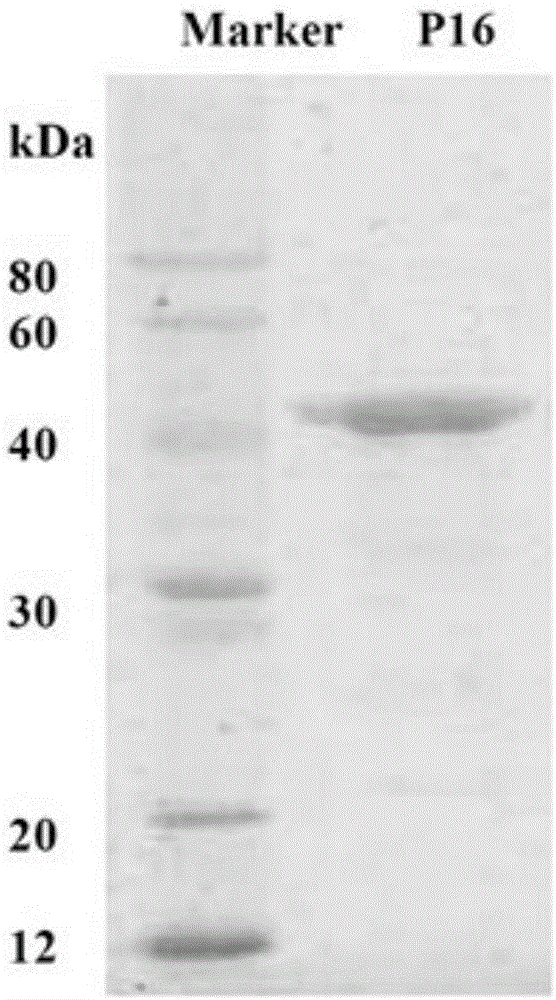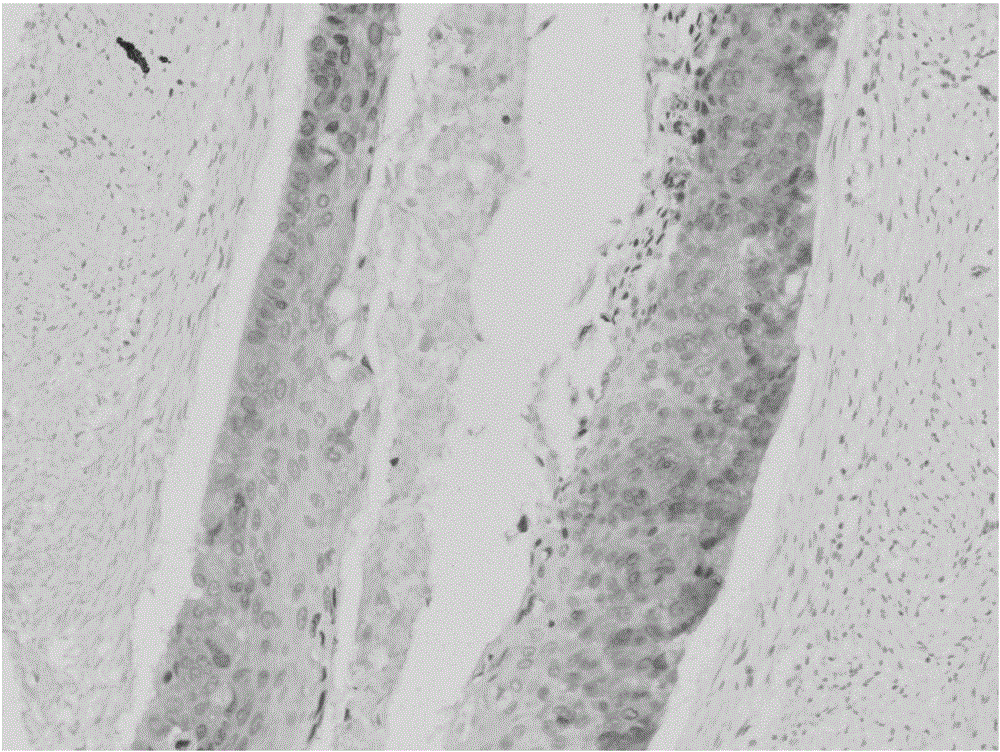Anti-p16 monoclonal antibody and preparation method and application thereof
A technology of monoclonal antibody and p16, applied in botany equipment and methods, biochemical equipment and methods, applications, etc., can solve problems such as inactivation, abnormal cell proliferation, and malignant cell proliferation, and achieve accurate diagnosis, specificity and The effect of high sensitivity
- Summary
- Abstract
- Description
- Claims
- Application Information
AI Technical Summary
Problems solved by technology
Method used
Image
Examples
Embodiment
[0040] Step 1: Preparation of recombinant P16 fusion protein
[0042] According to the protein sequence of the accession number P427712 in the Uniprot database and the corresponding nucleic acid sequence of NP_000068 in Genbank, the specific upstream primer prIHC-13F: 5'-CGGGATCCGGTGGTGGTATGGAGCCGGCGGCGGGGAG-3' and the downstream primer prIHC-13R: 5'-CCGCTCGAGATCGGGGATGTCTGAGGGACCTT were designed -3', amplified from the reverse transcription product in lymphocytes including a gene fragment encoding a full-length 156 amino acids.
[0043] During the PCR process, BamHI and XhoI restriction sites were added to the 5' and 3' ends of the gene respectively; the PCR products were separated by agarose gel electrophoresis and recovered, and the recovered fusion protein gene and the plasmid vector pET for expression were respectively -30-GST was digested with BamHI and XhoI, recovered by electrophoresis again, and ligated with T4 DNA ligase; the ligated product...
PUM
| Property | Measurement | Unit |
|---|---|---|
| Concentration | aaaaa | aaaaa |
| Molecular weight | aaaaa | aaaaa |
Abstract
Description
Claims
Application Information
 Login to View More
Login to View More - R&D Engineer
- R&D Manager
- IP Professional
- Industry Leading Data Capabilities
- Powerful AI technology
- Patent DNA Extraction
Browse by: Latest US Patents, China's latest patents, Technical Efficacy Thesaurus, Application Domain, Technology Topic, Popular Technical Reports.
© 2024 PatSnap. All rights reserved.Legal|Privacy policy|Modern Slavery Act Transparency Statement|Sitemap|About US| Contact US: help@patsnap.com










